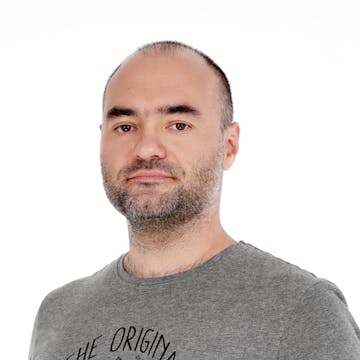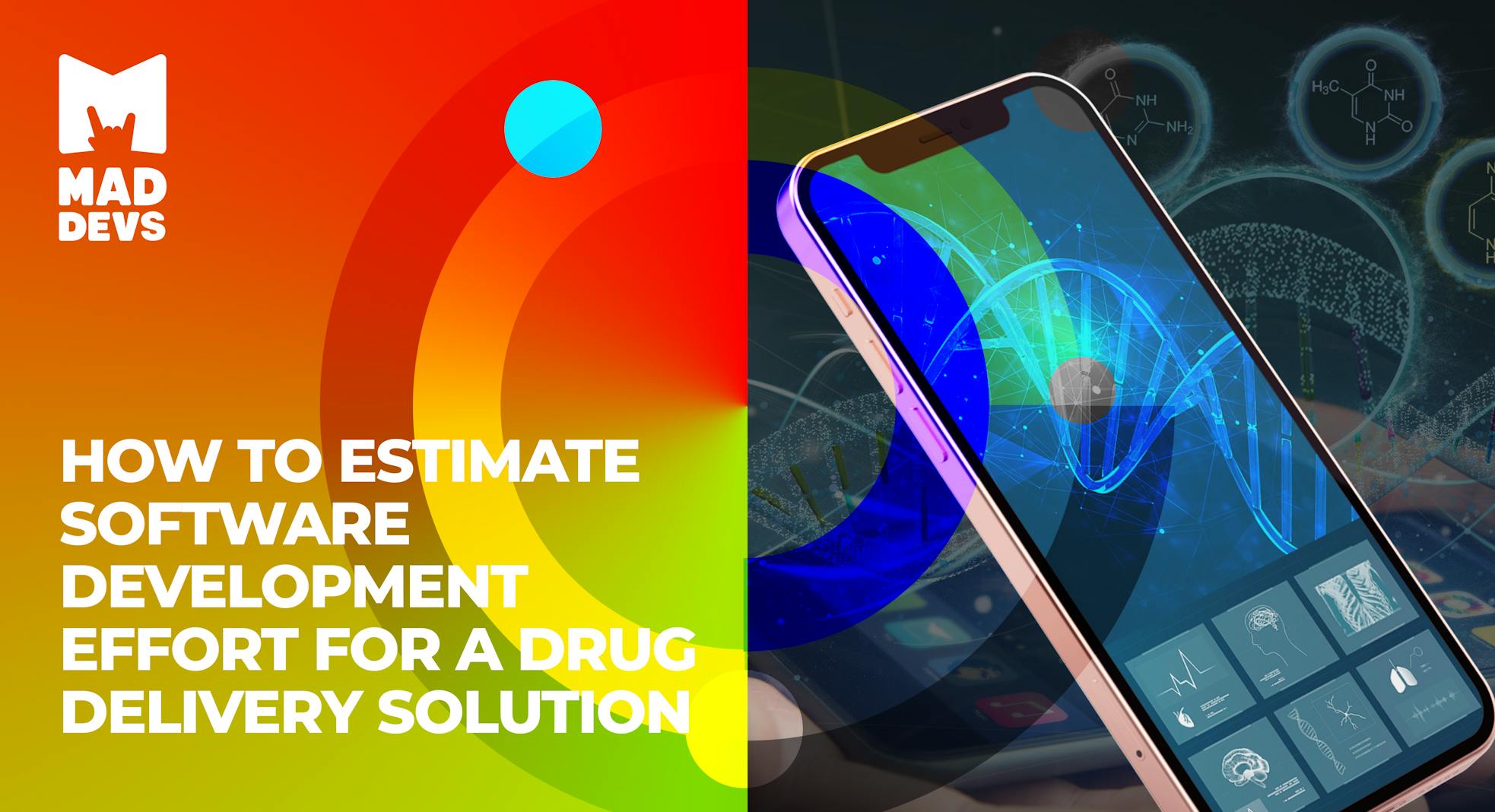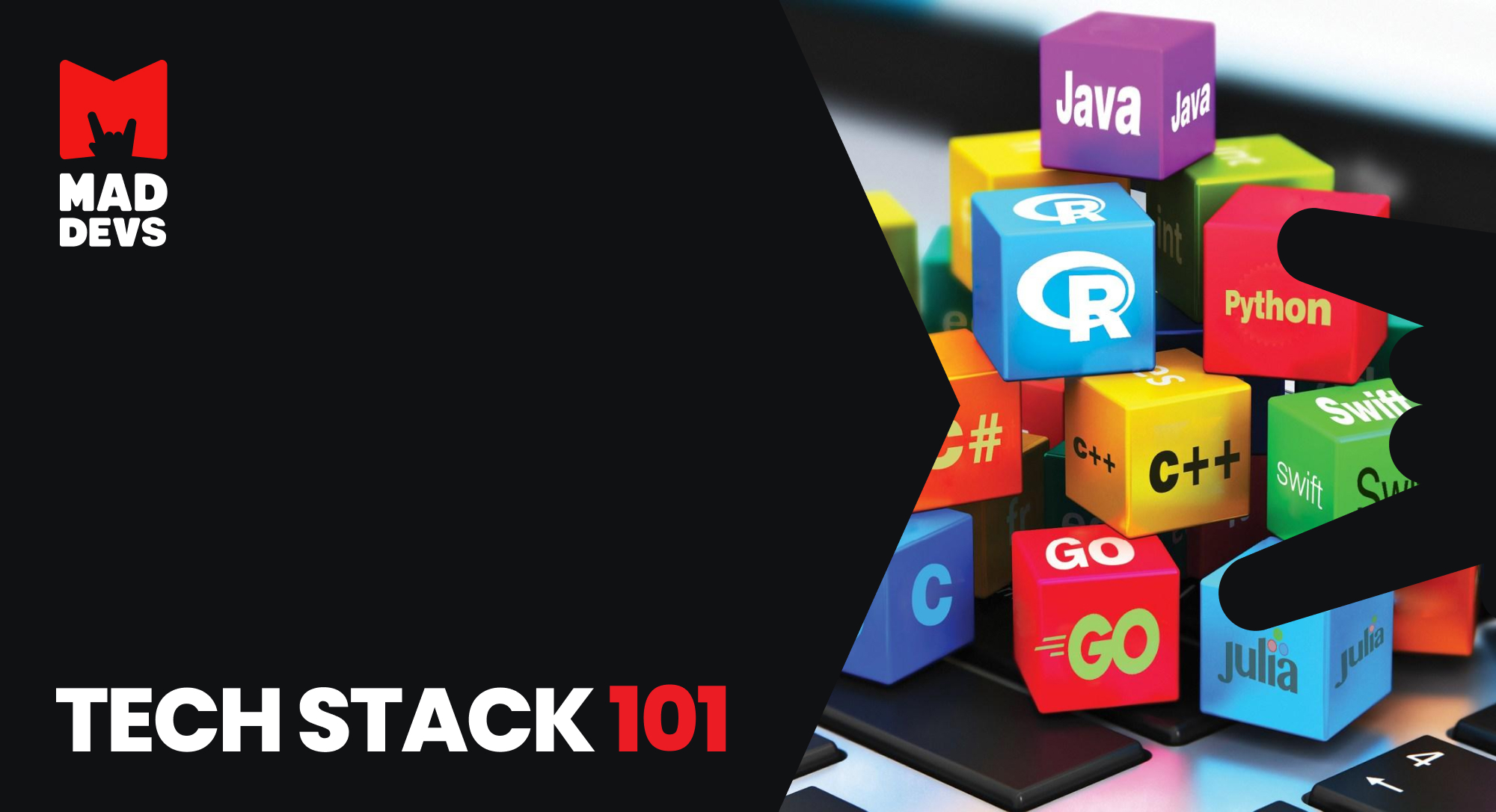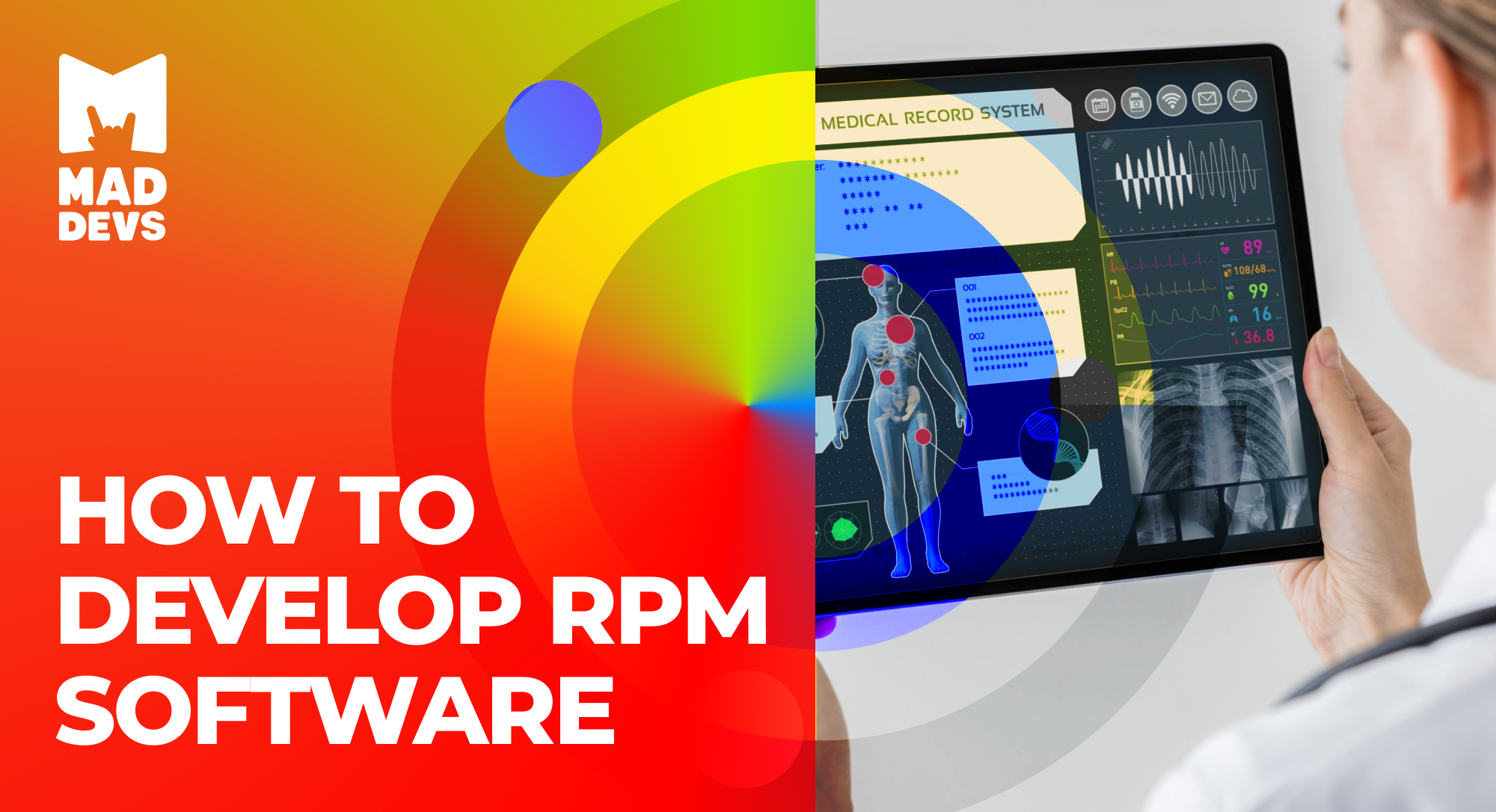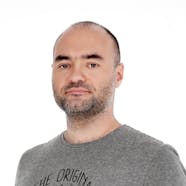The medical industry always tries to go hand in hand with the latest technology. Thus, the branches of computer science such as artificial intelligence (AI) and robotics have already been implemented successfully in surgery and diagnostics.
Computer modelling is another big source of opportunities for healthcare professionals. Modelling and simulation software combined with nanomedicine can fundamentally change the way diseases are diagnosed and treated.
Nowadays, either startups or large corporations are striving to create breakthrough solutions that would turn the medical world upside down. In this post, we'll talk about an innovative technology intended to deliver drugs to specific tissues in the human body. You'll learn how this type of project can be implemented and what amount of effort it might require.
Latest technology trends in healthcare
Today’s healthcare industry offers a great variety of solutions powered by modern technologies—from devices that monitor patients remotely to those that print human organs. Here are some of the most promising technologies that have already found use in medical applications or stand a good chance of doing this in the nearest future.
✔ Artificial intelligence
AI algorithms learn from immense volumes of input data, recognising patterns and analysing relationships between objects. AI offers machine learning algorithms and neural networks that can be used to identify diseases, make diagnoses, monitor patients remotely, and streamline workflows at medical institutions. According to Insider Intelligence, AI in healthcare will grow at an annual rate of 48% between 2017 and 2023.
✔ Robotics
Robots are not new in healthcare, however, present-day machines are able to perform far more complicated tasks as compared to their counterparts of 20 or 10 years ago. Modern robots can assist people in complex surgical operations requiring high accuracy and control. Advanced robotic devices, such as bionic limbs and exoskeletons, are now widely used in rehabilitation and prosthetics.
✔ 3D printing
The problems of organ transplantation, such as the lack of donors or donor-recipient incompatibilities, can be solved with the help of 3D printing technology. Today, the technology allows for printing customized implants used in surgery, prosthetics, orthodontics, and orthopedics.
✔ Nanomedicine
The use of nanoparticles can change the healthcare industry radically. Thus, nanotechnology can make it possible to detect dangerous diseases at early stages and effectively treat them at the cell level. The global nanomedicine market size is expected to reach USD 246.8 million by 2027 from USD 155.5 million in 2020 as reported by MarketWatch. Apart from diagnostic and treatment approaches, nanotechnology can play a major role in drug delivery. This topic is of special interest for us in this article so let's give the lowdown on it.
What is drug delivery?
Drug delivery is transporting medication into a patient's body for therapeutic purposes. There are different routes of delivery that fit specific types of drugs and diseases they aim to cure. Among these routes are:
- Oral (tablets, solutions, drops)
- Inhalation (inhalers)
- Nasal (sprays)
- Ophthalmic (eye drops)
- Otologic (ear drops)
- Dermal (ointments, creams, gels)
- Parenteral (intravenous, intramuscular, intraarterial, subcutaneous injections)
- Intravaginal (suppositories)
- Rectal (suppositories)
Every drug delivery method has its own strong and weak points, and all of them have two important issues impacting their efficacy.
The first issue is the systemic application of some medications, which means a drug cannot be delivered to a particular organ or tissue. As a result, the drug affects the whole body, which reduces its concentration and, consequently, effectiveness.
The second issue stems from the first one and is called a side effect. When applied to the whole body, a drug may act off-target and thus negatively affect healthy tissues.
Targeted drug delivery could solve the above two problems and ensure the transportation of a medicine to a target or diseased organ, bypassing neighboring body parts and tissues.
Nanotechnology can make an enormous contribution to target drug delivery and help to achieve a quantum leap in the treatment of grave diseases, such as brain cancer.
GlobeNewswire estimates the global drug delivery devices market at USD 22.2 billion in 2021 with an expected growth of USD 28.7 billion by 2026.
How does nanotechnology help?
So, what is the point of nanotechnology assistance? The technology employs tiny objects—nanoparticles—ranging from 10 to 100 nanometers in size. They can be made of either natural or synthetic polymers and may vary in size, shape, chemical and biophysical properties.
Nanoparticles can act as effective drug carriers by delivering medications directly to the injured tissues and treating them locally. They can be successfully used to cure cancer, genetic disorders, and infectious diseases. The main advantages of nanoparticles include:
- High carrier capacity
- Solubility
- Diffusivity
- Bioavailability
- Stability
Delivering drugs using DNA origami
Since nanoparticles can also be made from DNA, DNA-based nanotechnology becomes another efficient solution for target drug delivery. DNA is a natural molecule with the capability to self-assemble, which makes it possible to create a diversity of biodegradable nanostructures. These nanostructures can be turned into customisable drug carriers integrated with other functional components.
DNA origami is a way of quick DNA self-assembly that consists in folding cross-complementary DNA molecules, which bind to other DNA molecules on both ends. Short, separated DNA strands form a space structure of a specified shape and size—similar to the assembly of complex objects from building blocks of a construction kit. Folding DNA multiple times helps to create diverse nanostructures, such as drug delivery containers.
This is a simple and highly programmable technique that allows for designing custom DNA nanocarriers using computer software.
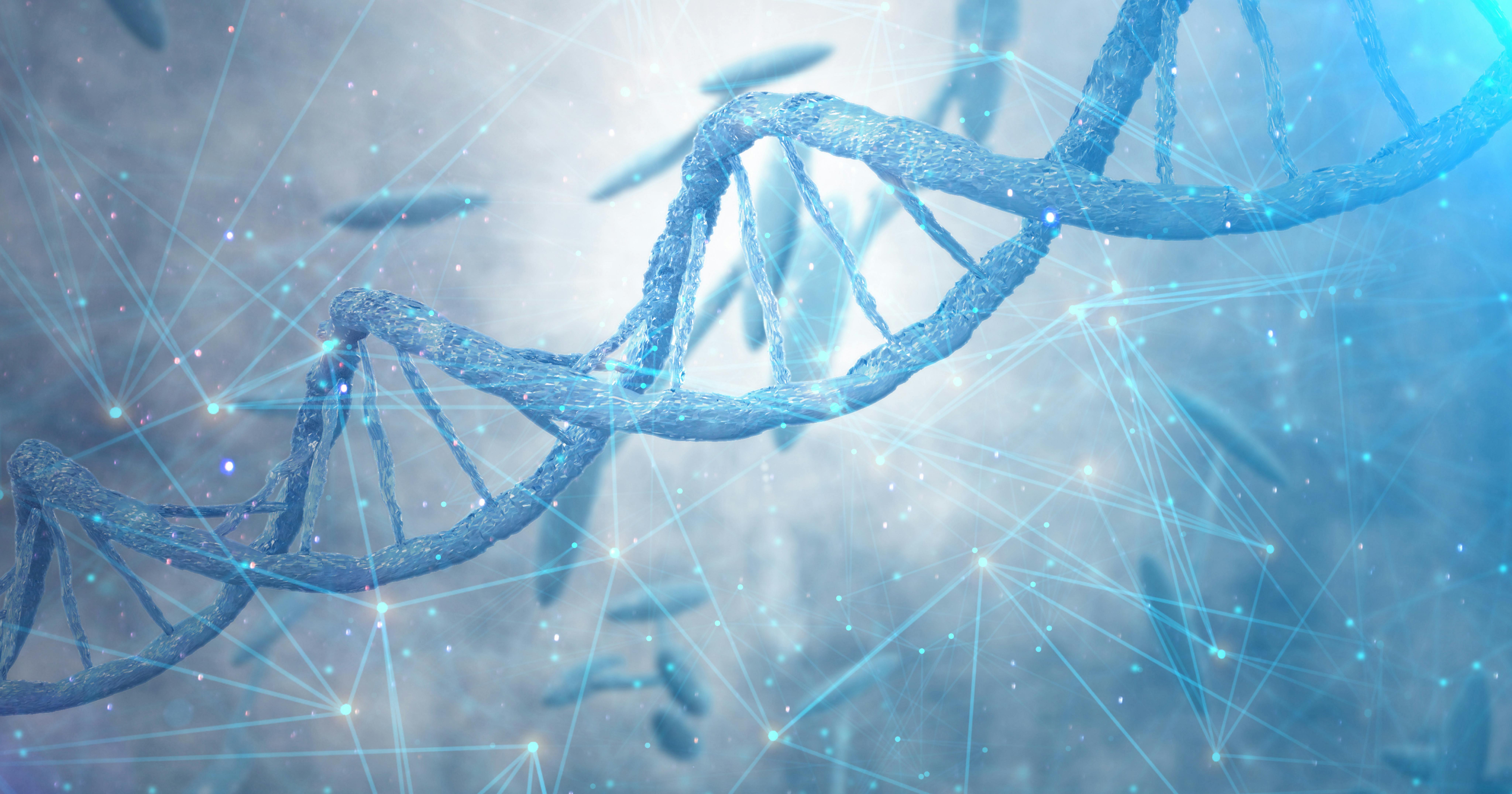
Creating a drug delivery solution
Having got a sense of the main terms and concepts, let's now look at a real-world project that aimed at creating a drug delivery solution and relied on DNA nanotechnology.
What was the project about?
The basis for the project was a nanocarrier or container about 20-30 nm in diameter that would deliver a medicine to a human body, namely, a certain organ or tissue. Being suitable for any medication, nanocarriers could enhance the treatment effectiveness.
As mentioned above, in traditional drug delivery methods, a medicine is spread throughout the whole body, which diminishes its efficacy. The significant advantage of the container approach is that medication reaches the target site and affects a particular body part. This can not only improve treatment but also eliminate potential side effects.
The container moves through blood vessels, and once it binds to the target, it penetrates into tissue from the blood vessel, dissipates, and releases medication. Targets are small proteins that can be found only in the tissue or organ to which the medicine must be delivered.
These nanocontainers were folded by the DNA origami method. Inside the container, there was supposed to be an active substance or medication, while on top of it, there should be aptamers allowing the container to bind to the target tissue or organ.
Aptamers are short single-stranded nucleic acids, either DNA or RNA, regarded as complex chemical molecules with attractive features and without reference to genetic information. They can take various shapes and bind to other molecules, which are different from DNA and RNA.
Problems that the drug delivery solution could address:
✔ Prevent side effects
✔ Combat superbugs resistant to antibiotics
✔ Treat vulnerable groups, such as pregnant and elderly patients
✔ Solve the dose-finding problem
✔ Optimise clinical trials
What was to be done?
The main project task was to develop software for calculating aptamers so that they could bind to targets with a high degree of probability.
The biggest challenge of the project was that aptamers were random molecules. The existing technology suggested the following workflow:
- First, aptamers were selected from random DNA or RNA libraries.
- Then, target proteins were added to the system.
- Finally, targets and aptamers mixed and bound to each other haphazardly.
The client needed a totally different approach to the construction of aptamers to get them bound to targets in a proper manner, that is, to deliver drugs to the right destination.
The new approach should have scientific evidence and rely on physics and quantum physics, chemistry, and biology. Forming an aptamer for a certain target required the knowledge of modelling molecules and their behaviour. For this purpose, the client planned to develop the following algorithms:
- Molecular docking algorithm - predicts binding affinity between a molecule (ligand) and a target to build a stable complex
- Scoring function for energy prediction - predicts binding energy between two molecules
- Algorithm for secondary DNA/RNA structure prediction - predicts intramolecular interactions within a DNA strand (the algorithm was almost completed in-house)
The client lacked internal resources and needed expert assistance with algorithm development so they turned to Mad Devs. But as with any project, the first and foremost thing was to get an estimation.
Project estimation
Algorithm development is a multistage process that encompasses a wide range of tasks and subtasks requiring comprehensive knowledge in various areas. For example, we relied on the awareness of a target's structure for aptamers' computer modelling.
To prepare the project estimation, we not only drilled down the specifications and theoretical basis but also held discussions with the client and within the Mad Devs team. As a result, we settled a list of tasks along with the time required for their implementation and testing. We also made allowance for risks that might be involved in the project execution.
Project estimation in man-days:
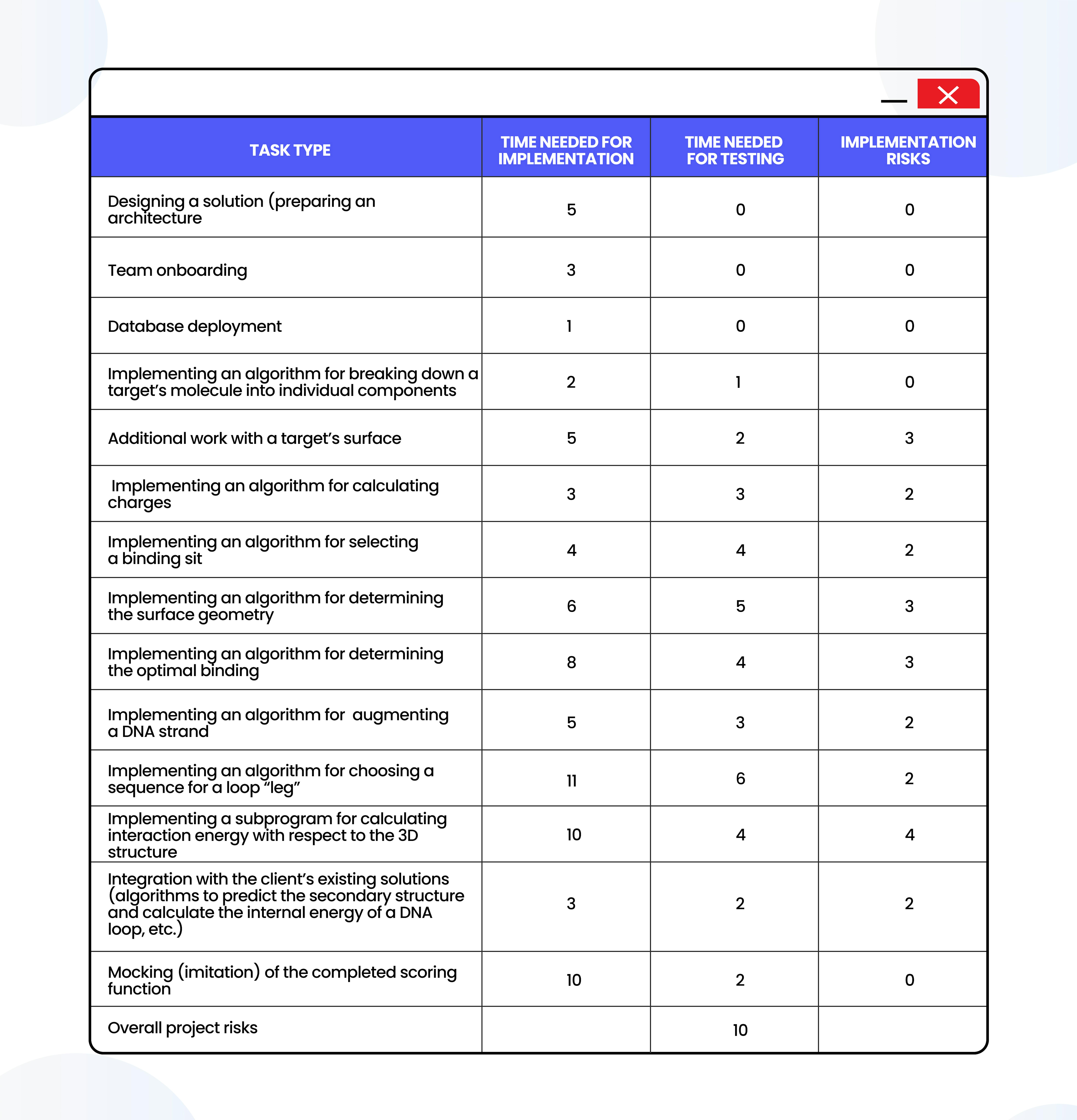
To sum up, the implementation of the above project for a drug delivery solution would take 147 man-days or 1176 man-hours. According to our estimation, this was the time needed to build software for modelling aptamers that would bind to targets and deliver medication as intended.
Given this time estimation, the development team for such a project would consist of at least 5 software engineers and a project manager. As for the budget, it would definitely depend on the technology stack, level of expertise, and hourly rate of a particular developer.
The average annual salary of a software engineer experienced in algorithm development is around £70,000, that is, £35 or $47 per hour according to CWJobs. Consequently, the budget of the above project can be estimated at nearly £41,160 or $55,272.
Conclusion
Nanomedicine is a promising trend in healthcare that can solve an array of problems connected to diagnosing and treating diseases of varying severity. Drug delivery is one of the most prominent applications of nanomedicine.
Transporting medication in a nanocarrier directly to the diseased tissue can significantly increase the effectiveness of treatment and at the same time decrease the probability of experiencing side effects. DNA is the perfect natural material for nanostructures that enables them to self-assemble into drug carriers of the required size and geometry.
Implementing a drug delivery solution based on DNA nanotechnology involves comprehensive research in a variety of scientific fields as well as the development of complex algorithms. In short, this is not a trivial task. But the good news is Mad Devs knows how to handle it.
